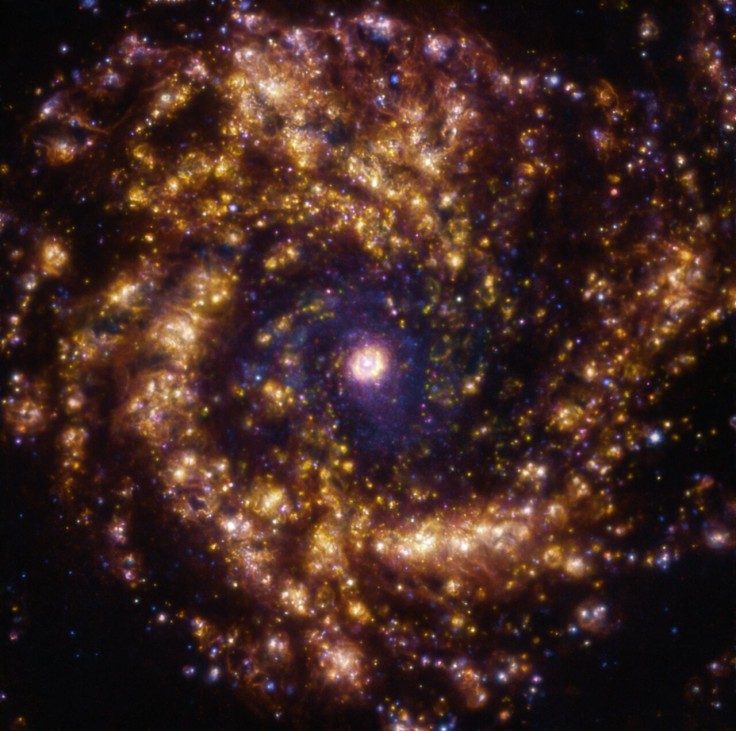
This photograph shows one of the biggest galaxies in the Virgo Cluster, the spiral galaxy NGC 4303, often referred to as Messier 61. According to a statement from the European Southern Observatory (ESO), this luminous gas may be seen in this beautiful image as the swirl of gold were traces of stars being born.
ESO noted that the observations are being conducted as part of the Physics at High Angular Resolution in Nearby Galaxies (PHANGS) project, which aims to identify nearby galaxies at all electromagnetic wavelengths.
Messier 61 Captured in a Photograph
The Messier 61 is a so-called starburst galaxy with extraordinarily high star birth rates. Astronomers have used this location in space as a learning environment to better comprehend the fascinating phenomenon of star formation.
ESO said that combining data made using the Multi-Unit Spectroscopic Explorer (MUSE) instrument on the Very Large Telescope in Chile has resulted in a golden glow.
What Is ESO's Very Large Telescope
One of the most technologically advanced optical telescopes in the world, the Very Large Telescope is made up of four Unit Telescopes with 8.2 m diameter primary mirrors and four moveable 1.8 m diameter Auxiliary Telescopes.
It includes eight telescopes in total, which can be used individually or in combination to create a bigger instrument.
Astronomers are able to gather considerably finer information of the cosmos than would be conceivable with the Auxiliary Telescopes or the Unit Telescopes alone thanks to the telescopes' ability to work together as a massive "interferometer," which is called the ESO Very Large Telescope Interferometer.
Unit Telescopes
As previously mentioned, the 8.2m diameter Unit Telescopes can also be used individually. A one-hour exposure can be used to capture photographs of celestial objects as faint as magnitude 30 with one of these telescopes.
This translates to the ability to see objects that are four billion times fainter than those that are visible to the naked eye.
Due to fluctuations in temperature and wind movement, this design reduces any negative effects on the observing circumstances, such as air turbulence in the telescope tube.
Auxiliary Telescopes
The Very Large Telescope Interferometer at ESO's Paranal Observatory is powered by four 1.8m-diameter Auxiliary Telescopes. They are self-contained and moveable around the Very Large Telescope platform, which is unusual for telescopes of this size.
Each Auxiliary Telescopes have round enclosures on tops, which can be opened and closed. According to ESO, the enclosure's purpose is to shield the delicate 1.8-meter telescope from the harsh desert environment
The Auxiliary Telescopes can be relocated to 30 different observation places because of the transporter section's track system.
The Very Large Telescope Interferometer may be modified to meet the needs of the observing project by moving the Auxiliary Telescopes since it functions much like a single telescope that is as big as the group of telescopes put together.









